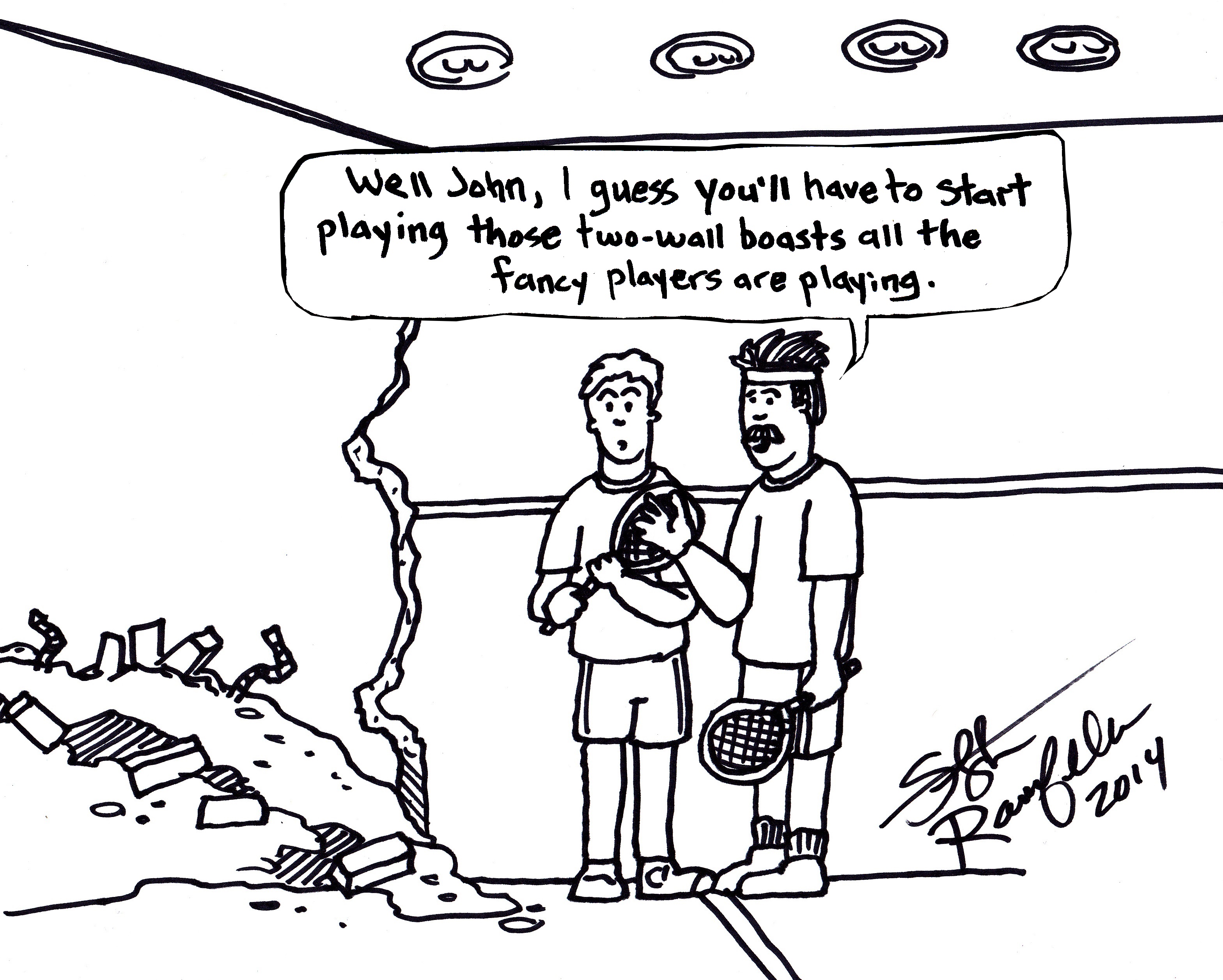In squash, when you think of a boast you tend to conjure up an image of a shot hitting three walls; the side wall you’ve hit the ball into, the front wall and then the side wall on the far side. This boast is a fairly defensive shot and in many ways fairly limited shot, as it often sits up quite nicely for the opponent to attack.
At the top level, three wall boasts are becoming few and far between. They are something of a last ditch shot on the majority of occasions with almost all boasts now being played with the aim of bouncing twice before the far side wall, making them only two wall boasts.
The reason the two wall boast is becoming so prominent is because it can put immense pressure on your opponent.

If a two wall boast is played correctly (this is not always easy), the ball will hit the middle of the front wall and bounce twice before the far side wall, meaning your opponent will have to lunge down low to recover the ball, which will require significant speed and energy and leave them awkwardly placed.
Not that the three wall boast’s obituary should be written just yet – it can be better to play a three wall boast than attempt a weak length shot from a tight position in the corner and it can give you time if you are in trouble. A few are even playing the three wall boast at an incredible pace to make it bounce back to the middle so it is more awkward for the opponent, which we talk about in another blog post.
What makes the two wall boast an effective weapon is that you can be in a bad position at the back of the court and still have the opportunity to play it. In just one shot, you can go from being under pressure to being the player on top.
It’s a fantastic combination shot and if your opponent is deep and not covering the T properly or has started to drift towards one side of the court expecting a straight drive, it can be a useful winning shot to have up your sleeve.
If played correctly (this is not always easy), the ball will hit the middle of the front wall and bounce twice before the far side wall, meaning your opponent will have to lunge down low to recover the ball, which will require significant speed and energy and leave them awkwardly placed.”
It’s also a shot you can experiment with and vary. A two wall boast can be played soft like a drop or fizzed in hard and low and can also be played at an angle so narrow that is stays on the same side as which it was hit.
Lastly, it is also useful as a combo shot as more often than not players will respond to a two wall boast by going to length with the next shot, often a cross-court lob, leaving you with a volley opportunity.
Try it and see if you can catch your opponent cold with a few two wall boasts.